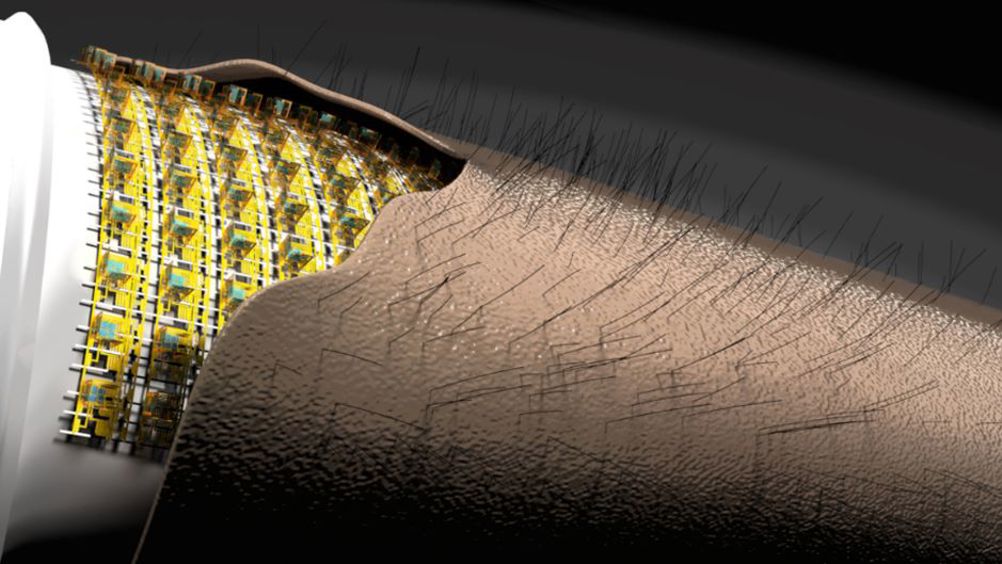Artificial hairs provide added sensitivity to e-skin
Medical sensors or artificial skin for humanoid robots could become more sensitive with a new e-skin integrated with artificial hairs.

Surface hairs perceive and anticipate the tactile sensation on human skin and even recognise the direction of touch, but modern electronic skin systems lack this capability and cannot gather this information about their vicinity.
Now, a research team led by Prof. Dr. Oliver G. Schmidt, head of the Professorship of Material Systems for Nanoelectronics and Scientific Director of the Research Center for Materials, Architectures and Integration of Nanomembranes (MAIN) at Chemnitz University of Technology, Germany, has adopted a new approach to the development of extremely sensitive and direction-dependent 3D magnetic field sensors that can be integrated into an e-skin system (active matrix). The team’s findings are reported in Nature Communications.
In a statement, Christian Becker, a PhD student at MAIN and first author of the study said: "Our approach allows a precise spatial arrangement of functional sensor elements in 3D that can be mass-produced in a parallel manufacturing process. Such sensor systems are extremely difficult to generate by established microelectronic fabrication methods."
Register now to continue reading
Thanks for visiting The Engineer. You’ve now reached your monthly limit of news stories. Register for free to unlock unlimited access to all of our news coverage, as well as premium content including opinion, in-depth features and special reports.
Benefits of registering
-
In-depth insights and coverage of key emerging trends
-
Unrestricted access to special reports throughout the year
-
Daily technology news delivered straight to your inbox










Water Sector Talent Exodus Could Cripple The Sector
Maybe if things are essential for the running of a country and we want to pay a fair price we should be running these utilities on a not for profit...